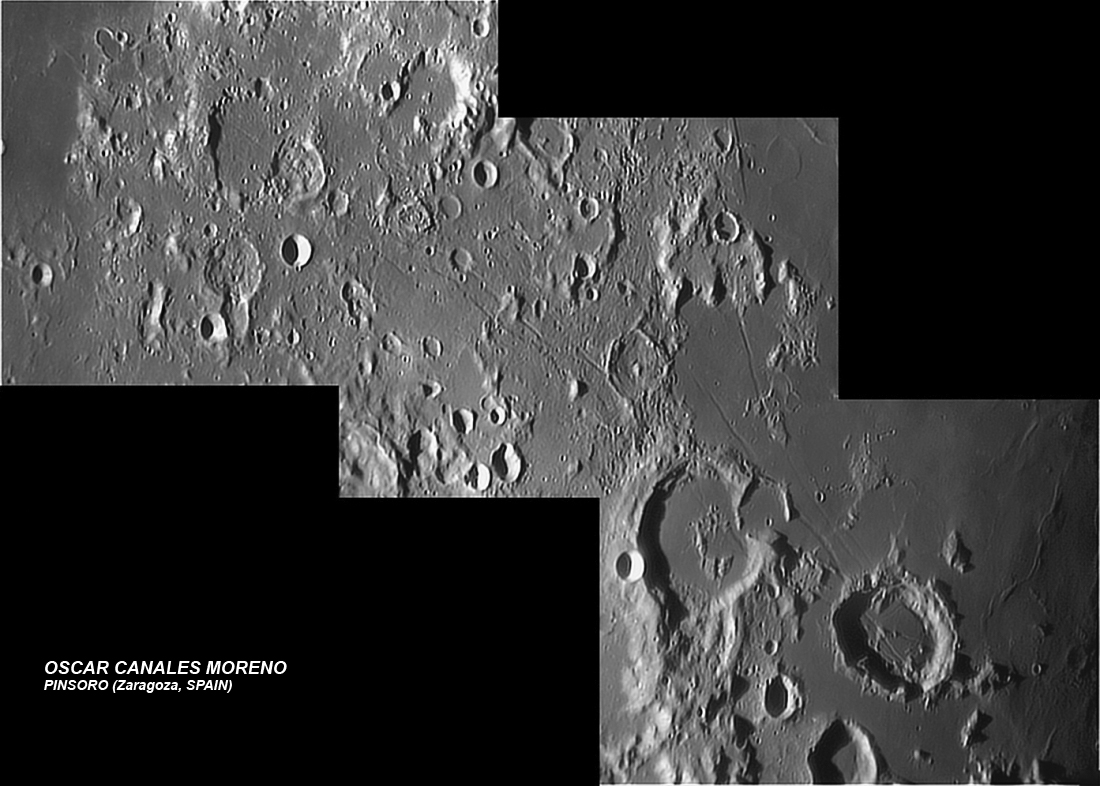image byOscar Canales Moreno, Pinsoro, Spain
Terra Manna, the square patch of bright terrain sandwiched into the intersection of maria Tranquilitatis, Fecunditatis and Nectaris, is crossed by a series of three or four mostly linear rilles in an en echelon pattern. The italicized words mean that the rilles are parallel, but offset to each other. I have wondered before why the rilles - the Gutenberg Rilles - exist, but still have no satisfactory answer. This image stresses another question - what is the relationship between the Gutenberg Rilles and the nearby (bottom right) Goclenius Rilles? The latter rilles appear to be younger than the Guttenberg ones, and the two sets are misaligned by an angle of 15-20°, so they probably didn’t form in response to the same stresses. It is likely that the Goclenius Rilles are concentric to the poorly defined Fecunditatis impact basin and thus formed as the mare material in the basin subsided. Notice also the narrow fault scarp at the top-center-right - it is evidence that the inner part of Fecunditatis moved downward compared to the edge - at least in that area. One final oddity - notice that the floor-fractured crater Goclenius has a strangely rounded inner wall. I wonder why?
Technical Details:
Nov 9, 2006. Newton Skywatcher 250mmEQ6 f:25 + Mintron 12V6-EX Videocamera + Canon MV500i + W25 Red Filter + VirtualDub for deinterlace and video capture + Registax 4 + Photoshop + Neat Image. 3 images mosaic of 350/3000 images at 50 img/seg
Related Links:
Rükl plates 47 & 48
Yesterday's LPOD: A, B, Cs of Lunar Topography
Tomorrow's LPOD: Moving West
COMMENTS?
Register, Log in, and join in the comments.




